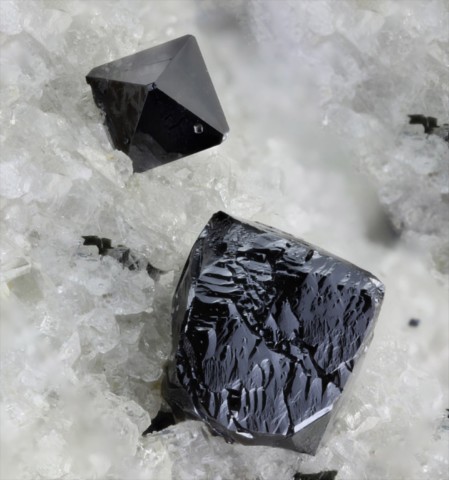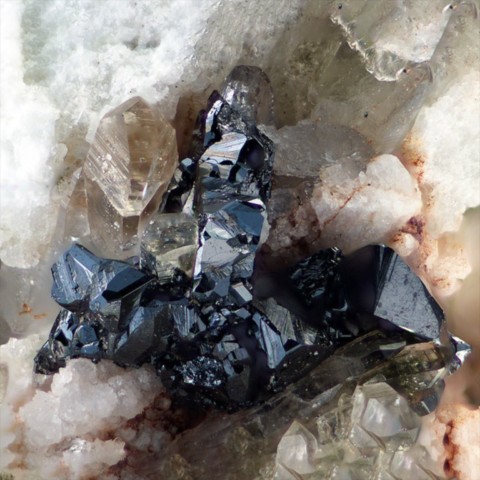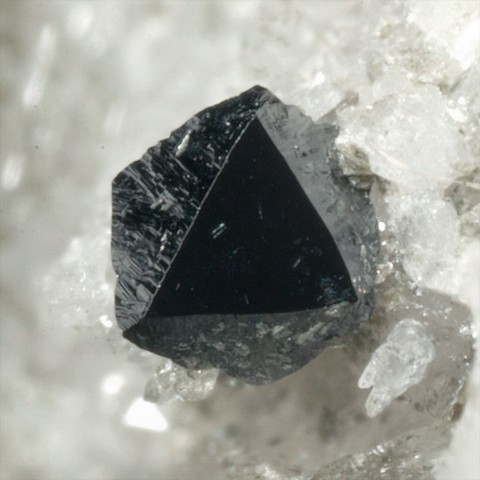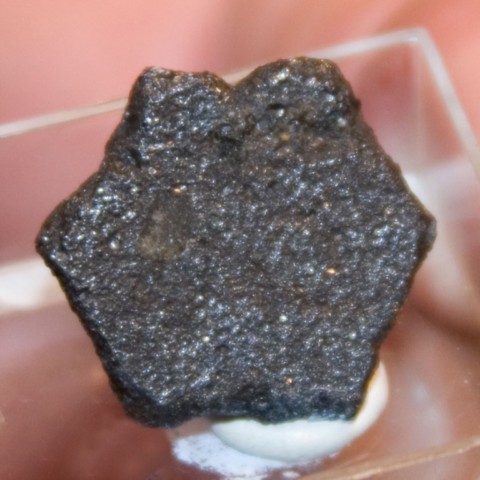CRICHTONITE
Class : Oxides and hydroxides
Subclass : Oxides
Crystal system : Trigonal
Chemistry : (Sr,La,Ce,Y)(Ti,Fe,Mn)21O38
Rarity : Rare
Crichtonite is a rare mineral, long confused with ilmenite. It is a mineral typical of Alpine clefts. Its name was given to it in honor of the Scottish physicist Alexander A. Crichton, also a mineral collector. It is a gray-black mineral, forming flattened lamellae, more rarely acute rhombohedra or octahedra, with a strong luster. Its appearance is reminiscent of hematite.
Main photo : Crichtonite from Pizzo Cervandone, Piedmont, Italy © Chinellato Matteo
Crichtonite in the World
Twinning
A multiple twin is known and produces pseudohexagonal crystals up to 2 cm in particular on the Presidente Kubitschek deposit (Minas Gerais, Brazil).
Fakes and treatments
No fakes listed for this mineral species, but easy to confuse with hematite without chemical analysis...
Hardness : 5 to 6
Density : 4.46
Fracture : Conchoidal
Streak : Grey
TP : Opaque
RI : -
Birefringence : -
Optical character : -
Pleochroism : None
Fluorescence : None
Solubility : Insoluble
Magnetism : None
Radioactivity : None





